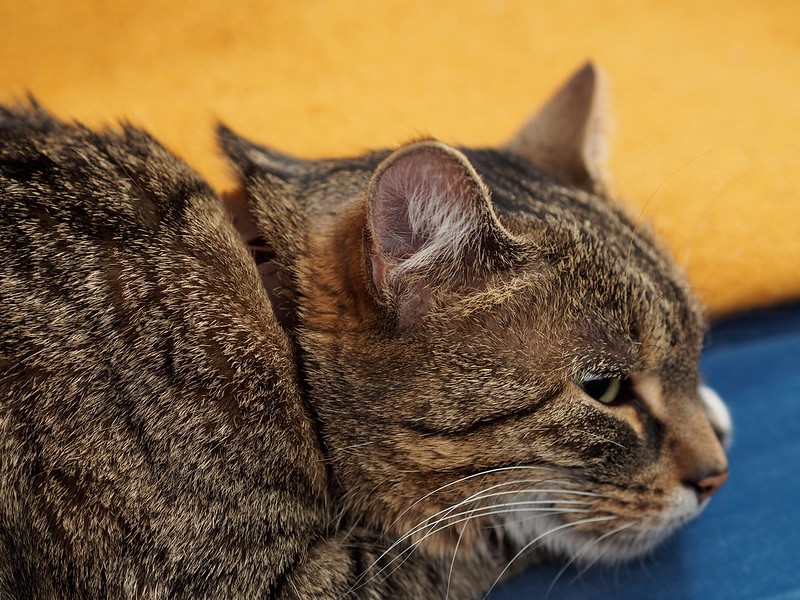As photographers we often work with props, and also with stand-in models. In the company we have a mannequin to test lighting setups with, here at home I often ask Zuleikha for one of her figures, dolls and such. So for the following example / demonstration I used her teddy.
As photographers, we are also constantly on the lookout for good light, but if there isn’t any, or too less of it, we know that we have to make our own light. In this example, I wanted to show and share some of my thoughts about mixed lighting, using the available daylight together with some that we can create ourselves.
First thing to consider is the light temperature. Daylight has about 5600K, so if you want to mix artificial light without any heavy filtering together with daylight, you’d also take some light which is in the same colour temperature range – in this case, I used flash.
Second thought is that light actually adds up. You cannot trust your camera’s metering (which doesn’t “see” the flash before it actually happens/fires) and add light after you meter. So you have to underexpose both the ambient and also the flash light – in sum, this would give you a “right” level of exposure again.
The following shot of Teddy was available light only, but underexposed one full stop:

As you can see, that gets you in the ballpark. The outside above our sofa is still overexposed (or “blown out” as they say), but that isn’t my subject, so I didn’t care. The dark parts like on the blanket or on Teddy herself (it’s a “she”) could use some fill. This is an out-of-camera image with saturation on “-1”.
One of my studio strobes was opposite of the room, with a standard reflector mounted, and it pointed onto the wall. I switched that on and measured the light on Teddy with the strobe at its lowest power output (1/32nd of what it can blast out, so that’s about 10Ws or so). That measurement told me I should use an aperture of 1.1 – but don’t forget that this would be when the flash would be used as the only, or the dominant light source, which isn’t what I wanted. Besides, I don’t have any Noctiluxes or Voigtländer lenses which can open up that much, and I also didn’t want a paper-thin depth of field which such an aperture would give you.
So I started with using aperture 2 like in the available light shot above, but the strobe was still a bit strong and “visible” when used that way, tho it was about 2 stops under. In the end, I used an f-stop of 2.8 to get what I wanted. I also changed the angle of the camera a bit, and in post-production (with Olympus Viewer 3) I reduced the saturation to “-2”, and set the picture output setting to “Muted” (instead of “Standard” or “Neutral” which the camera was set to). I often do that when photographing humans, to get better skin colours for the 16 bit .tif image which I create with the Olympus Viewer 3, and which I further “develop” to a .jpg using RawTherapee on Linux.
The resulting image was this:

Teddy with fill flash
As you can see when comparing these two photos, even with the saturation and the picture “profile” turned down, you still get much better colours, and it simply “pops” a lot more. In Teddy’s eyes you see that small point light source which the flash actually is, even when reflected over a wall. But while that gives away that you used flash, for people it also means that you’ll get a little “sparkle” into their eyes, which often makes them look better, and somehow more “lively”.
So what’s the summary of this? If you want to mix daylight with flash or any other artificial light, underexpose both of them. When using flash as a not too obtrusive “fill” like here, the rule of thumb for this picture would be: daylight at minus one, flash at about minus three stops. Of course this mixing of lights depends on what you’re trying to do, so go on and play around to learn it.
Oh, and the 10Ws remark shows you that you actually don’t need a studio strobe for this – any external compact flash like our 40$ Yongnuos could get that level of output easily.
Thanks for reading.



















